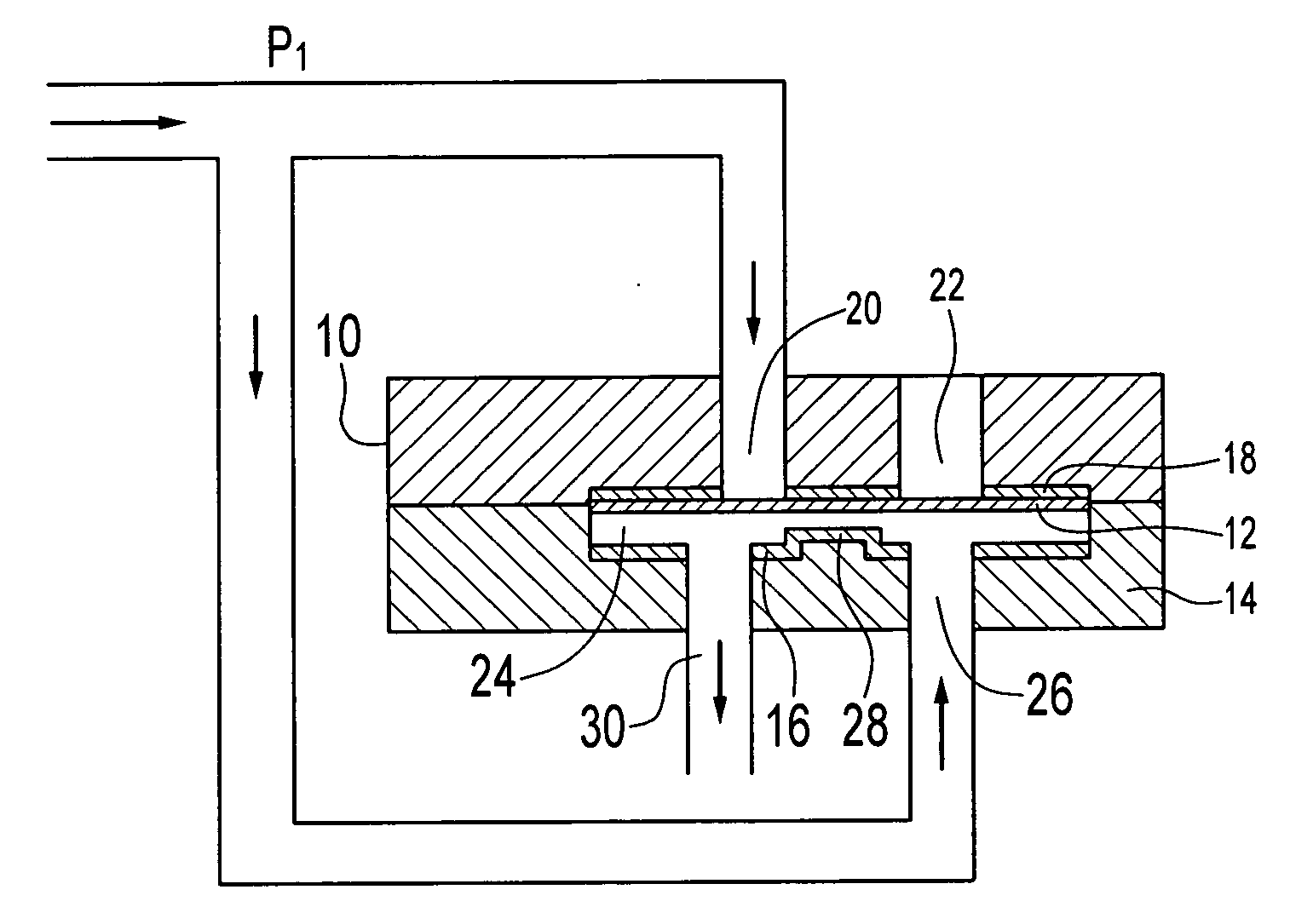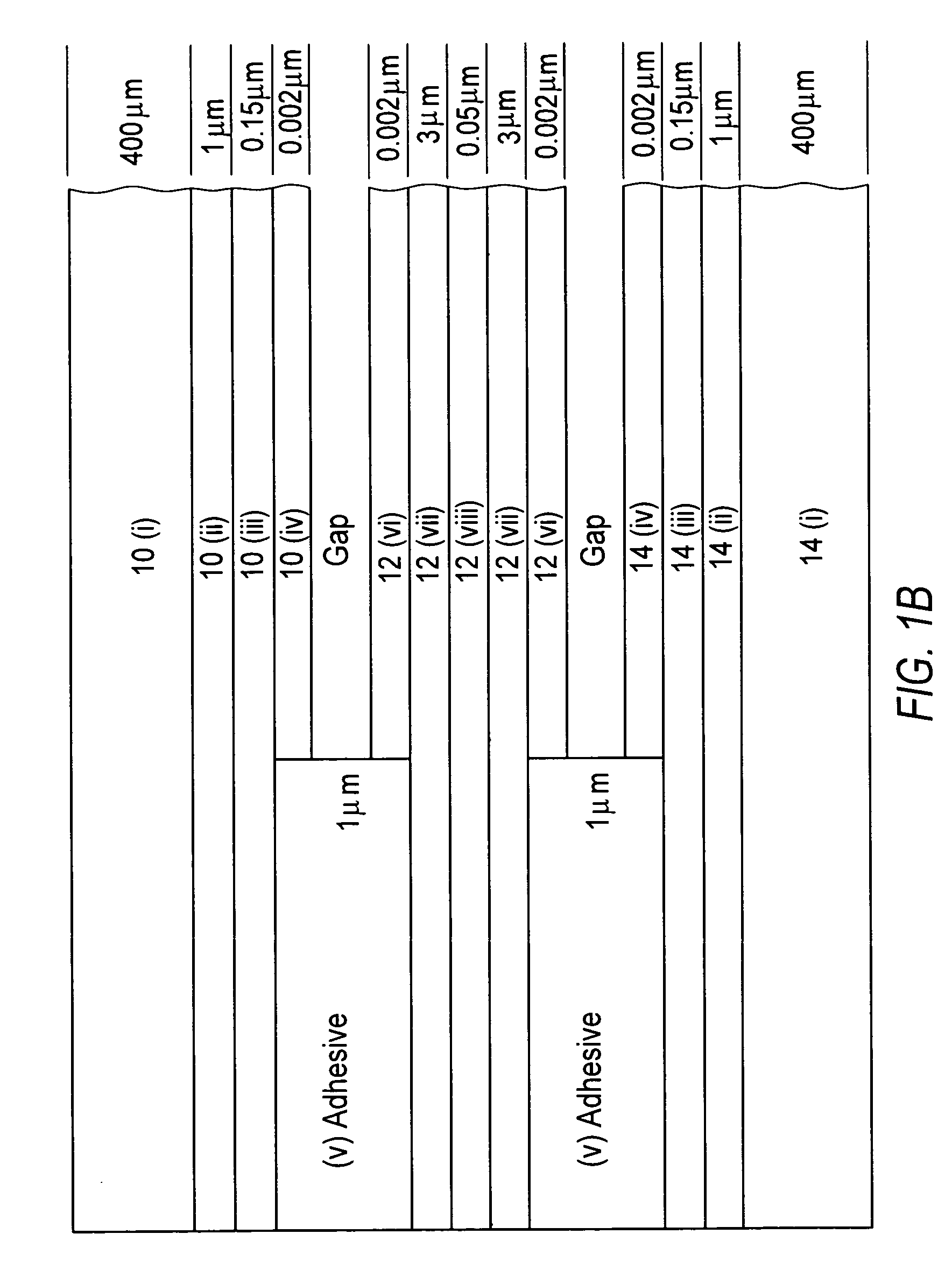Bi-direction rapid action electrostatically actuated microvalve
a micro-valve, electrostatically actuated technology, applied in the field of microfluidics, can solve the problems of increasing the life of the device, achieve the effect of reducing the film squeezing pressure of the membrane electrode, quick actuation, and low surface charge trapping
- Summary
- Abstract
- Description
- Claims
- Application Information
AI Technical Summary
Benefits of technology
Problems solved by technology
Method used
Image
Examples
Embodiment Construction
[0039] A preferred embodiment bidirectional electrostatic microvalve of the invention includes a membrane electrode that is controlled by application of voltage to fixed electrodes disposed on either side of the membrane electrode. Dielectric insulating layers separate the electrodes. One of the fixed electrodes defines a microcavity. Microfluidic channels formed into the electrodes provide fluid to the microcavity. A central pad defined in the microcavity places a portion of the second electrode close to the membrane electrode to provide a quick actuation while the microcavity reduces film squeezing pressure of the membrane electrode.
[0040] In preferred embodiment microvalves, low surface charge trapping and low surface energy coatings coat low bulk charge dielectric layers. In preferred embodiments, thin silicon nitride coatings provide low surface charge trapping dielectric. For low surface energy, fluorocarbon films made from cross-linked carbon di-fluoride monomers or surface ...
PUM
 Login to View More
Login to View More Abstract
Description
Claims
Application Information
 Login to View More
Login to View More - R&D
- Intellectual Property
- Life Sciences
- Materials
- Tech Scout
- Unparalleled Data Quality
- Higher Quality Content
- 60% Fewer Hallucinations
Browse by: Latest US Patents, China's latest patents, Technical Efficacy Thesaurus, Application Domain, Technology Topic, Popular Technical Reports.
© 2025 PatSnap. All rights reserved.Legal|Privacy policy|Modern Slavery Act Transparency Statement|Sitemap|About US| Contact US: help@patsnap.com



